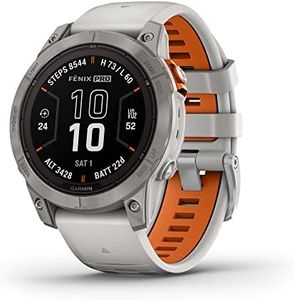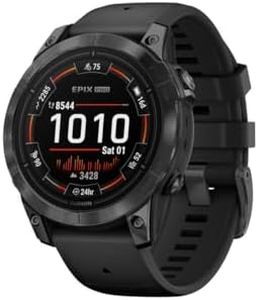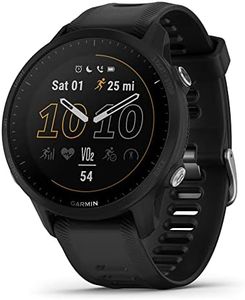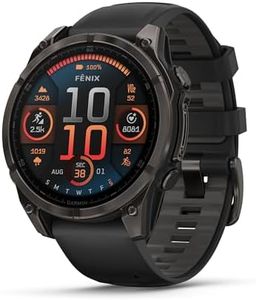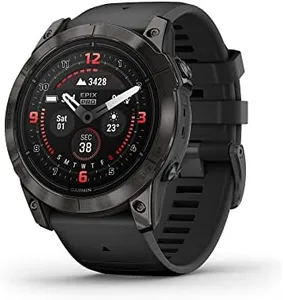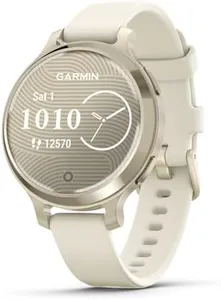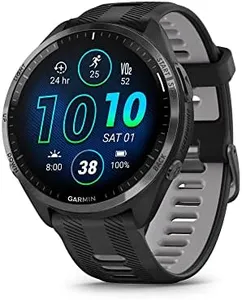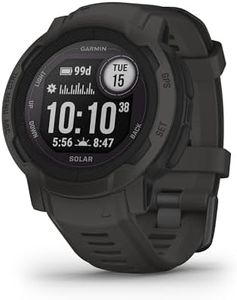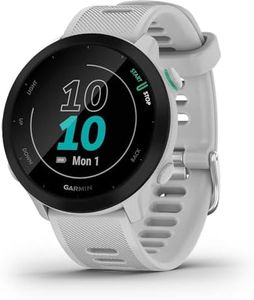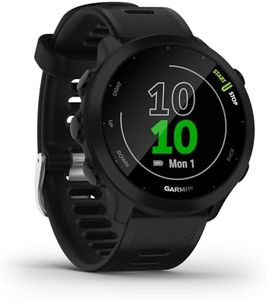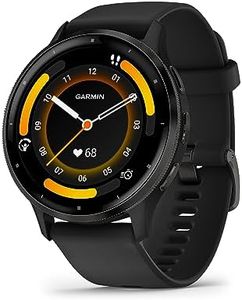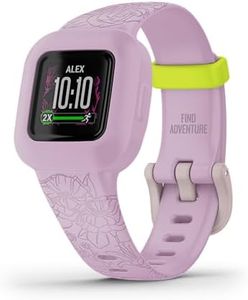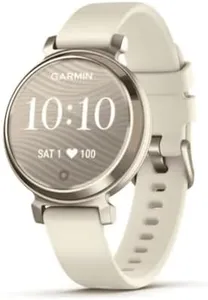We Use CookiesWe use cookies to enhance the security, performance,
functionality and for analytical and promotional activities. By continuing to browse this site you
are agreeing to our privacy policy
10 Best Garmin Watches
From leading brands and best sellers available on the web.Buying Guide for the Best Garmin Watches
Choosing a Garmin watch can feel overwhelming because there are many models tailored for different activities and lifestyles. The best way to pick the right one is to match the watch’s features and performance to your needs, whether that’s getting healthier, tracking runs, navigating the outdoors, or monitoring your everyday habits. Understand what you’d like the watch to help you with most, then compare the main specs and features that matter for that use.Display TypeThe display type refers to how the screen looks and behaves. Some Garmin watches use transflective memory-in-pixel (MIP) displays, which are easy to see in bright sunlight and great for outdoor use, while others use AMOLED displays for richer colors and sharper details, more suitable for those who care about visuals and want smartwatch-like looks. If you plan to be outside a lot in all types of light, a MIP display will be easier to read, but if you want a vibrant, eye-catching screen for casual use, AMOLED might be better.
Battery LifeBattery life tells you how long the watch runs before it needs charging, and this can vary widely depending on the model and features used. Basic activity trackers may last weeks, while feature-rich GPS watches might run for a few days or hours with GPS turned on. If you want a watch for everyday tracking and dislike frequent charging, opt for models with extended battery life. If advanced features like music, navigation, or always-on display matter most, know that battery may run down quicker so choose a balance that fits your routine.
Built-in GPSA built-in GPS allows your watch to track distance, pace, and routes during activities like running, cycling, or hiking without relying on your phone. Some watches also support multiple satellite systems (like GLONASS or Galileo) for better accuracy. If you regularly train outdoors and value detailed tracking, ensure the watch includes this feature, especially with multi-satellite support for rough terrains or urban areas.
Sport and Activity ModesSport and activity modes are pre-set functions designed to track specific workouts such as running, cycling, swimming, golf, or even yoga. Simpler watches have just the basics, while more advanced ones support a huge range of activities. To choose well, think about which types of activities you do most; a model with relevant modes will give you better data and a more motivating experience.
Health Monitoring FeaturesHealth monitoring includes heart rate tracking, sleep analysis, blood oxygen measurement, and sometimes stress or hydration tracking. Some watches offer just basic heart rate, while others have advanced sensors for more in-depth health stats. If you’re mainly interested in keeping tabs on general well-being, a basic model may do, but for serious training, health insights, or managing wellness goals, look for watches with robust health tracking tools.
Water ResistanceWater resistance tells you whether you can safely wear the watch while swimming, showering, or in the rain. Some are only splash-proof, others are safe down to certain depths—often shown as meters or ATM ratings (like 5 ATM for swimming). If you plan to swim with your watch or use it in wet conditions, make sure it has appropriate water resistance for your activities.
Smartwatch CapabilitiesSmartwatch capabilities refer to things like message notifications, music control or storage, contactless payments, and apps. Entry-level models might show only basic alerts, while more advanced ones let you reply to messages, store music, or pay wirelessly. Consider how much you want your watch to act like a mini-smartphone; if you like leaving your phone behind and still want to stay connected or play music, prioritize these features.
Size and ComfortSize and comfort cover how the watch fits on your wrist, including overall watch face size and strap comfort. Some watches are lighter, smaller, or designed specifically for smaller wrists. If you wear your watch all day (or night, for sleep tracking), you’ll want a model that feels comfortable and not too bulky. Try to visualize or try on different sizes to see what suits your wrist and style best.
Durability and BuildThe durability and build describe how tough the watch is, especially for outdoor use. Features like scratch-resistant glass, metal bezels, or reinforced cases can handle more rugged environments. If you’re rough on your gear or plan to use the watch in demanding outdoor settings, durability should be a higher priority. For light everyday use, a standard build may be just fine.
